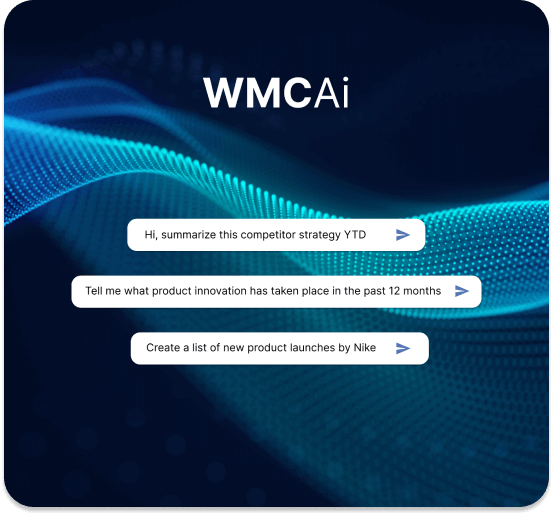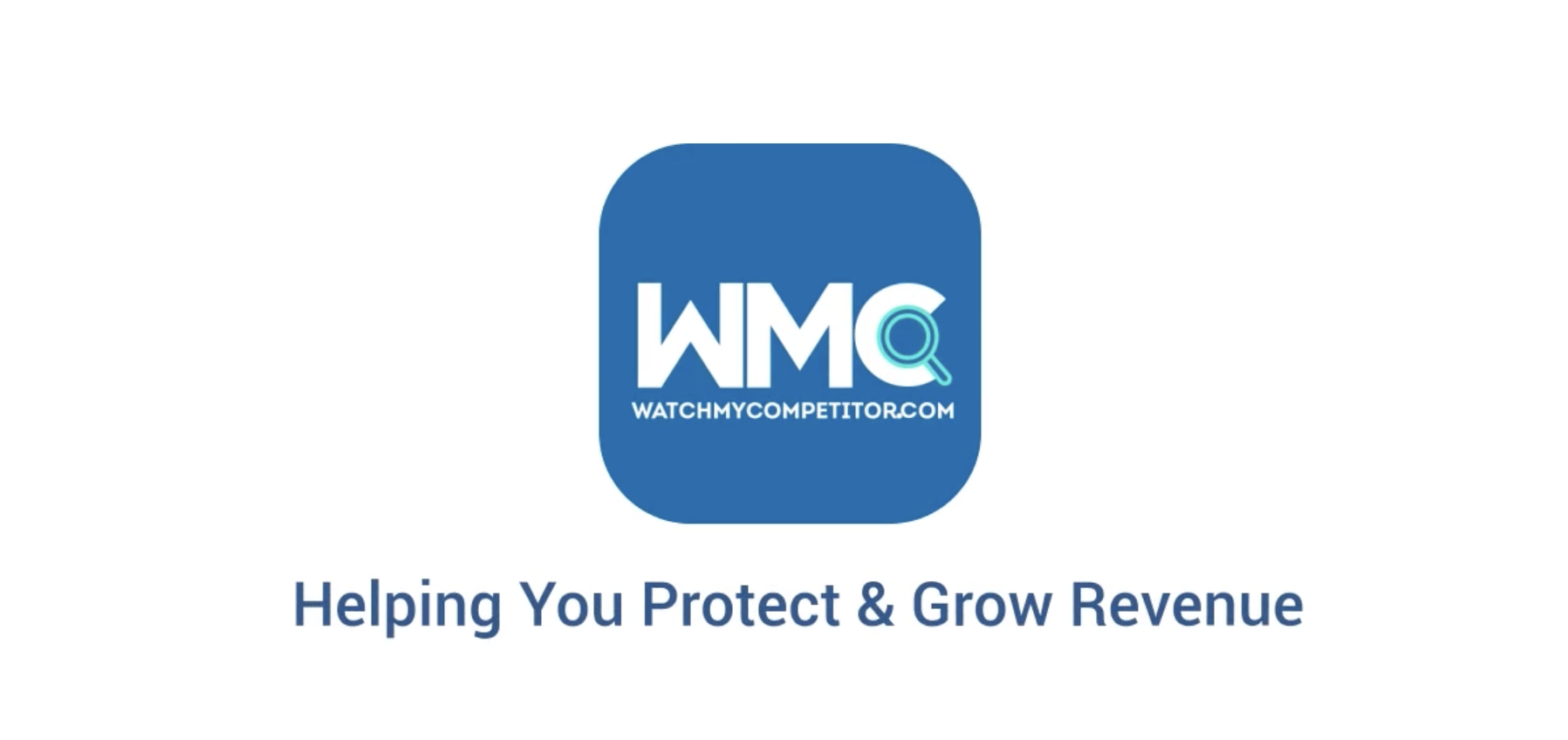Introduction
Did you know that 90% of Fortune 500 companies are actively using competitive intelligence (CI)? While 61% of businesses report that CI helped them directly increase revenue. The importance of competitor intelligence can’t be understated.
Yet marketing professionals, one of the primary users of CI, are not able to fully capitalise on this development. Even though they are increasingly under pressure to be the first to know about key industry trends.
According to industry research, it’s estimated that the vast majority of marketers (87%) believe that data is under-utilised. In addition, more than a third of marketers don’t feel comfortable handling data.
This comprehensive guide provides marketers the 5 simple steps required to achieve success with competitive intelligence. We will explore in-depth competitive intelligence, its benefits, how to gain maximum value from any CI investment and available resources on the market.

Table Of Content
- What is competitive intelligence and its benefits
- Competitive intelligence is everywhere in 2023
- The burden of knowledge for marketers
- The 5 steps to competitive intelligence success
- Useful CI resources for your team
What Is Competitive Intelligence & It’s Benefits
Competitive intelligence is information gathered about your competitors and the market in general that offers insights you can use to adapt and improve your strategy, products, marketing, plans and other parts of your business.
The process for gathering the intelligence is competitor tracking, which typically involves monitoring the internet for competitor activity and announcements. This could be product and feature launches, senior appointments, inward and outward investments, price promotions, marketing campaigns and more.
Competitive intelligence is used by companies across a wide variety of sectors including fashion, FMCG, finance, telecommunications, education and beyond. The benefits of CI can include the following:
- Respond faster to new market threats
- Capitalise on new market opportunities
- Build a stronger strategy and product roadmap
- Learn from competitor mistakes
- Identify competitor weak spots
For a more comprehensive list of competitive intelligence examples and benefits, please read this article here.
Competitive Intelligence is Everywhere in 2023
For marketers, competitive intelligence is a way to stay on top of the market. To know what your competitors are doing, optimise your marketing strategies and have a direct impact on revenue.
This is certainly reflected in terms of wider industry trends. According to SCIP, 92% of senior stakeholders at high growth companies say CI is valuable. Furthermore, 90% of organisations will maintain or increase competitive intelligence spending.
Marketers are also under pressure to be the first to know about and report back on trends, threats and opportunities that require urgent action. If an organisation loses out to a competitor for a lucrative contract, key hire or market opportunity, for example, it’s the marketing department that’s now held accountable.
In years gone by, monitoring competitor activity might have involved a slow, laborious manual process, typically carried out by the least experienced member of the marketing team. Today, it’s done with the click of a mouse thanks to automated competitive intelligence software.
Marketers – and indeed anyone in an organisation – can automate the monitoring process and receive real-time competitive intelligence on tap.
Such tools are making it four times faster to locate relevant information, reducing the time spent duplicating intelligence-gathering activity and freeing up more time for analysis, sharing and usage.
The Burden Of Knowledge For Marketers
This all sounds straightforward, yet studies suggest it’s anything but.
For example, 87% of marketers say data is being under-utilised. While just 24% of the world’s largest firms (which have more resources than most) say they are data-driven – a fall from 38% in 2020.
Organisations are struggling to embrace and make the most of the data at their disposal. Automation was meant to make the process simple and easy (which it does, bear with us) yet just 35% of marketers don’t feel comfortable with the data they’re handling.
What this means is that marketers are trapped between needing real-time intelligence and finding it difficult to process and use. They’re overwhelmed.
The 5 Simple Steps For Competitive Intelligence Success
Step 1: You need do define why you need competitive intelligence
One of the main reasons marketers and organisations in general get overwhelmed by data is that they have too much to work with. 74% of firms say they want to be ‘data-driven,’ but only 29% are actually successful at connecting analytics to action. While data in the US reveals that 80% of workers experience information overload.
Competitive intelligence platforms are designed to help you overcome this challenge. And while they’re excellent at tracking competitor activity, most leave you to sift through the data and identify what’s useful. This is a time-consuming process, which delays your being able to turn intelligence into actions.
So how do you address this?
Simple, you use a market analyst or expert. It’s their job to collate, analyse and curate the intelligence so that you get faster access to the most relevant insights to support your specific goals.
Some competitive intelligence platforms offer market analysts as part of their service. In this scenario, the analyst works with you from day one, building your criteria and dashboard based on your unique requirements (as defined in step 1). This means less leg work and zero data-sifting – a game changer for busy marketers that just want to make smarter decisions faster.
If you’re not using a platform that provides a market expert, your alternatives are to hire an agency or additional employees to handle the process. This approach may favour larger organisations with bigger financial resources although it can still be a slower option that finding an all-in-one solution
Step 2: Work with an experienced market analyst
One of the main reasons marketers and organisations in general get overwhelmed by data is that they have too much to work with. 74% of firms say they want to be ‘data-driven,’ but only 29% are actually successful at connecting analytics to action. While data in the US reveals that 80% of workers experience information overload.
Competitive intelligence platforms are designed to help you overcome this challenge. While they’re excellent at tracking competitor activity, most leave you to sift through the data and identify what’s useful. This is a time-consuming process, which delays your being able to turn intelligence into actions.
So how do you address this?
Ultimately, it helps to have access to a market analyst. It’s their job to collate, analyse and curate the intelligence so that you and your organisation receive the most relevant insights to support your specific goals.
Some competitive intelligence platforms provide these analysts as standard. As well as curating your intelligence, they’ll build your dashboard based on your unique requirements. The alternative to an all-in-one solution is to hire an agency or additional employees to handle the process. Building your own team of analysts and intelligence experts is typically more feasible for larger organisations.
Whichever route you choose, this will mean your time is well spent, working with valuable, actionable insights.
Step 3: Share intelligence the way people want it
The fastest way to turn people off competitive intelligence is to give it to them in a way that makes their job harder by creating extra work.
There’s no getting away from the market saturation of SaaS products (BMC). Organisation leaders are bombarded with messages from software providers that promise to solve your challenges that they’ve developed a natural scepticism to what they can do.
They often have concerns about having to learn a new piece of software or the time and cost of training others in the organisation to do the same.
How do you overcome this internal resistance?
Following the path of least resistance is the best way to slowly but surely transition to a data-driven organisation. That means making use of existing workflows and communication channels, so stakeholders don’t have to get their heads around a new piece of software.
Whether you use Slack, Teams, Power BI or other tools, smooth integrations are fundamental to a well-run intelligence programme. Doing your homework when choosing your competitive intelligence platform will ensure it can fit seamlessly into everyday operations.
Less resistance means more buy-in. Which in turn means more data being used to make better decisions. When making a decision about a competitive intelligence platform, it’s important to grasp and define the prerequisite requirements of key stakeholders internally beforehand.
Therefore, when a final decision is made, the adoption of a competitive intelligence within your organisation will be swift and seamless.
Step 4: Design processes for how data is used and reported on
To borrow a sporting analogy, it’s not enough just to have a team of superstars. You need the right tactics to bring it all together.
In the playing field of CI, even the most powerful insights are fairly valueless without the right processes in place to make them usable. Outlining the journey a piece of intelligence takes, from collection to action, will give you a repeatable model that delivers smart decision-making.
So how do you go about it?
Start by establishing the roles of who’s involved in the process. Is your intelligence being managed by one person (e.g. you), by an assembled team of stakeholders, by the whole marketing department or someone else.
Who is responsible for getting the data to the right people? What channels will they use? Who will have access to the dashboard and who just receives alerts when key activity is tracked? Who will train stakeholders in how to use the data they receive?
Next, be clear on the expectations you have for how data needs to be used. Should every strategic decision be validated by data or just some of them? In what scenarios should data be used to inform decisions? What decision-making models can you use to ensure data plays a part?
How will you communicate these expectations? How will you ensure stakeholders are held accountable for their decisions, so that they see the value in data to validate their actions? This could be done through existing meetings (e.g. board and department lead meetings). Or by setting up regular briefings for stakeholders to explain not just the outcome of their decisions but their data-driven thought process and key learnings.
Designing processes may not sit exclusively within the marketing department. But if you’re owning your organisation’s investment in CI, you may need to lead the designing of processes by challenging people to answer these important questions.
Step 5: You need to measure the impact of CI
“As more decisions are made using CI, […] you’ll be better placed to draw conclusions about the overall impact it’s having on your organisation.”
In the early stages of your use of competitive intelligence, you’ll need to prove its worth to senior decision makers – those that sign off any SaaS investments. And as with any investment, nothing speaks louder than return on investment.
If you can demonstrate that the decisions you’re making with the help of CI are leading to better financial outcomes, you’ll have a greater chance of increasing your budget and expanding your use of your platform.
In the early stages, when the data set for impact may be small, you’ll need to drill down into specifics. Focusing on individual decisions have contributed to increases in sales or performance indicators such as social media engagement, media coverage or recruitment.
As more decisions are made using CI, the data set will expand and you’ll be better placed to draw conclusions about the overall impact it’s having on your organisation. You can even use your competitor intelligence platform to track your own performance versus that of your competitors to see the progress you’re making since CI was adopted.
As well as increasing your chances of securing bigger budgets, measuring the impact of CI will help you to get smarter at using it. You’ll see patterns of what types of data have the biggest impact and where your resources can be redirected to maximise efficiency and success.
Four variables to measure to assess CI’s effectiveness:
1) Increased market share – A successful CI strategy is all about getting and staying ahead of your competitors, so you should be able to see your share of the market increasing.
2) Revenue growth – As well as protecting revenue, CI should help you to increase sales by allowing you to identify and adapt quickly to opportunities and threats in the market.
3) Positive marketing ROI – For every penny you spend on marketing, you should be able to see a return. Better intelligence should deliver better marketing performance.
4) Improved customer retention rate – CI should help you to meet the needs of your customers more effectively. Improved customer retention demonstrates the value of data-driven decision-making.
Useful CI resources For Your Team
1) Websites for choosing the right CI tool
G2 is a good starting point when it comes to researching the most suitable competitive intelligence tool on the market. This website provides a definitive list of CI tools, segments them according to users and industries, and provides reliable customer reviews. Other credible SaaS review sites, such as TrustRadius and SaaS Hub are good alternatives as well.
Once you have shortlisted your competitive intelligence tool, take the time speak with the CI tool providers’ representatives and see how the software aligns with your organisation’s needs.
2) Where can I access thought leadership articles about CI
There currently plenty of free online resources regarding competitive intelligence, but WatchMyCompetitor’s Insights hub is a good starting point and provides in-depth analysis of CI themes. Articles there include the following:
– Building An Effective Competitive Intelligence Strategy In 2023 (link)
– 5 Key Competitive Intelligence Trends For 2023 (link)
– Gathering Competitive Intelligence For Small Businesses (link)
3) CI bodies that can support your organisation
There are several leading competitive intelligence bodies and organisations that play a significant role in promoting and advancing the field of competitive intelligence. Here are some of the prominent ones:
Strategic Consortium of Intelligence Professionals (SCIP):SCIP is a global nonprofit membership organization dedicated to enhancing the skills, knowledge, and effectiveness of professionals involved in competitive intelligence. SCIP provides resources, training programs, conferences and networking opportunities for competitive intelligence practitioners.
Competitive Intelligence Alliance: Competitive Intelligence Alliance was founded in June 2022 with a mission to unite competitive intelligence leaders and strategic analysts across the globe – all while offering resources available for career and business development.
Institute for Competitive Intelligence: The Institute for Competitive Intelligence was founded in 2004 to provide professionals with a solid and flexible competitive intelligence training program to become a certified Competitive Intelligence Professional.








